A person. Michael Dell's dream come true

A few days ago, one of the largest IT companies in the last 40 years happened on the market. Dell finally officially announced the merger of EMC.
Currently, Dell Technologies is a holding company that includes several companies of varying degrees of affiliation and publicity. In addition to the “old” Dell, it includes the combined Dell EMC, as well as Pivotal, RSA, Virtustream, SecureWorks, and VMware. The latter two are not fully included in it and are not under its direct operational control.
')
Today, the combined company with a cumulative turnover of $ 74 billion has 140 thousand employees in 180 countries.
It all started with a dorm room, which the future company founder Michael Dell used as a workshop. Now he has everything. His dream came true. But Della still doesn’t have one “trifle” - a diploma of higher education.
Childhood and hobbies
Michael Dell was born on February 23, 1965.
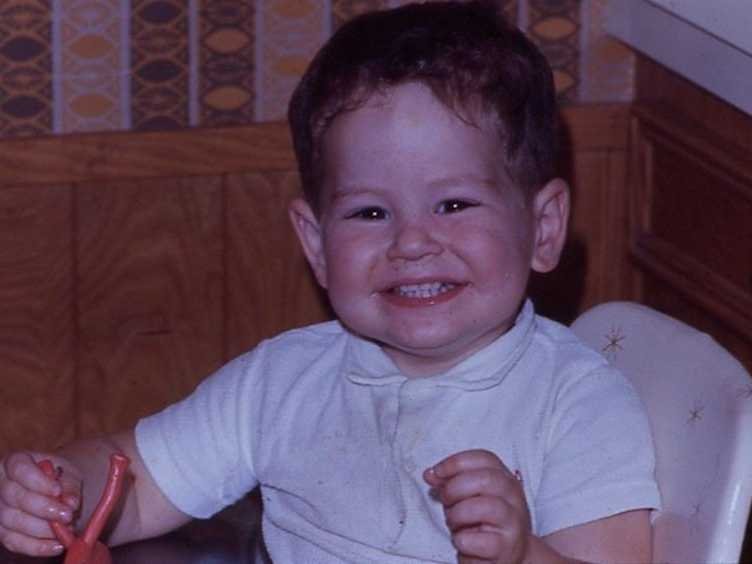
Facebook.com/michaelsdell
His parents were not entrepreneurs. His father, Alexander Dell, worked as an orthodontist, and his mother - a broker. They strongly advised Michael to choose a profession in the field of medicine.

Facebook.com/michaelsdell
But his life was different. Michael Della visited the idea of selling stamps, placing advertisements in philatelic magazines. He earned as much as $ 2,000. And he immediately purchased his first PC, after which he pulled it apart to see how everything worked there. It was, probably, the only Della computer in his life, which he disassembled, but did not assemble.
On one of the fine days of 1977, Alexander Dell and his three sons went fishing in the sea. The elders caught, and the 12-year-old Michael Dell sat on the shore, patiently weaving an elaborate tackle capable of carrying dozens of hooks at once. Adults did not believe that something would come of it. He finished for dinner. However, when it was time to leave, it turned out that he caught more fish than all the others combined. Since then, in all circumstances of life, Dell follows the rule: “If it seems to you that an idea is good, you should try it in practice.”
Studying in high school, I decided to make some money by selling a subscription to the city newspaper Houston Post (now deceased). But he did not go door to door. It occurred to him that the newlyweds - an ideal object for its direct marketing. For his money, he hired buddies, who got for him the names and addresses of newly worn couples. Michael carried them into his computer and sent each couple a personal rather than a typical letter, offering a free two-week subscription as a wedding gift.
By that time, the main professional principle of the young manager was formed: “It is not so important what you sell, how much, how you do it.”
This time, Dell has already earned $ 18,000 and bought VMW. The car salesman was speechless when a 17-year-old boy pulled the entire amount out of his pocket in cash.

BMW
Atypical student
At the insistence of his parents, Dell entered the biological faculty of Texas State University in Austin. Meanwhile, the latest technical novelty, the personal computer of the IBM, was rapidly becoming fashionable at that time.
“A fairly simple model,” Dell later recalled, “cost about four thousand dollars. For the sold car, the dealer sent it back to the IBM 2500. And I thought - why should we pay such money to the dealer, without even being able to order exactly the configuration we need? Why not sell machines from the factory directly to the end user? ”
Dell knew that IBM required dealers to meet the monthly PC sales rate, often in excess of the amount they could actually sell. He also knew that for months to keep finished products in stock is not a cheap pleasure. Therefore, he began to buy warehouse surplus from dealers.

In his room in a student hostel, turned into an improvised workshop, he modified the finished machines, attaching additional components to them (or, on the contrary, removing something), the market demands were known to him not by hearsay. After that, Michael placed ads in newspapers, offering his “user-optimized” computers at a price 15% lower than retail.
Soon he successfully sold computers to businessmen, doctors and law firms. The trunk of his luxury car served as a warehouse, and his room on campus acquired a completely uninhabited look.
His father advised him to first get a degree, and then go into business. Dell agreed. But a month later he began to trade computers again. Later he will say that he could not miss this chance. Monthly sales were now over $ 50,000.
“I want to start my own company,” the future multi-billionaire said.
- What exactly are you going to do? - asked the father.
“Compete with IBM,” the son answered.
Returning to Austin, Dell risked all the savings and on May 3, 1984, he founded PC's Limited. This happened when he was only 19 years old. In 1987, PC's Limited was renamed the Dell Computer Corporation. He never returned to school.
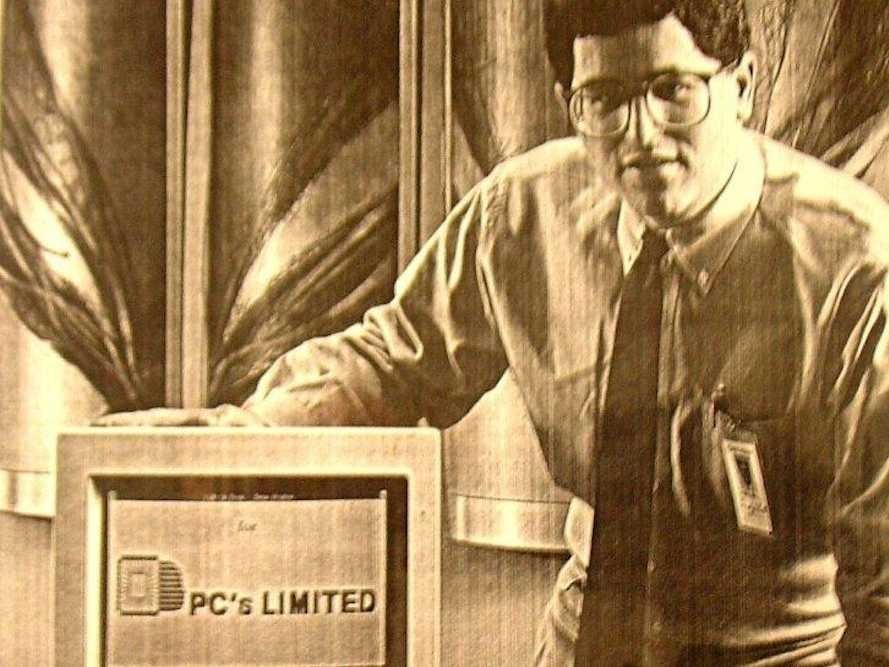
Takeoff
Dell rented a one-room office and hired his first employee, a 28-year-old manager who was in charge of finance and administration. Undoubtedly, the company needed advertising. Dell made the first sketch on an empty pizza box. A friend copied it onto paper and took it to a newspaper.
Dell continued to specialize in direct sales of IBM PCs, to which he added topical “frills” at the time.
He worked on this principle: “Sell to the user not what was lying around in the warehouse, but what he needs. And cheaper than others. " As a result, sales for the first month of work reached $ 180 thousand, for the second - already $ 265 thousand.
A year later, he already sold 1000 PCs per month.
Dell reasoned like this: "My competitors developed products, and then told users what they needed, instead of first understanding what the market needed, and then producing."
On the day when Michael Dell should have graduated from college, his company’s worldwide sales grew to $ 70 million a year. Dell stopped selling computers from other manufacturers and began to make their own.

Harry Cabluck / AP Images
“It was absolutely clear to me that we need to change ... to learn a host of other things. I knew that I had to change equipment, expand staff, hire classy, well-paid managers. It was obvious to me, ”Dell explained the reasons for the transition from the sale of computers in IBM in 1985 to the creation of its own brand.
The fall
Dell turned out to be overly talented as an entrepreneur. He “grew up” so quickly that “he hit his head on the ceiling,” and quite painfully - and the company he created began to crumble before his eyes under his own weight: “Every day, hearing the bad news, I expected the next to be even worse.”
The stock price, which jumped from 23 cents in 1990 to $ 40 in 1992, fell several times.
Taking himself in hand, Dell began to act decisively and immediately turned sales through stores: "Our business is to sell cheap and high-quality computers directly into the hands of the buyer." In addition, he lured several leading managers from the giants of the global computer industry (Apple, Motorola, IBM, Tricord).
“We’re not just going to survive computer wars.” We are going to flourish, ”said his public statement.
Reboot
The big poster hanging at the Dell plant in Austin in the summer of 1994 read as follows: "Glenn will get a cake in his face for 2,200 computers within 10 hours." Dell Vice President Glenn Armbruster promised that if the plant ships 2,200 rush order computers in just ten hours, he agrees that workers smear it in whipped cream. Glenn stood creamed and laughed: "This is a great price for such a result."
Once Henry Ford, the creator of the American people's car, said: “You can have a car of the color you want. Honestly". Thus began the consumer revolution - nothing prevents a consumer product from being made to order and at a time specified by the buyer.
A customer who orders a computer from Dell receives it within 36 hours - and the machine will be assembled only from those components that suit the customer. It's not just about individuals: 90% of Dell’s sales come from corporations and government customers.
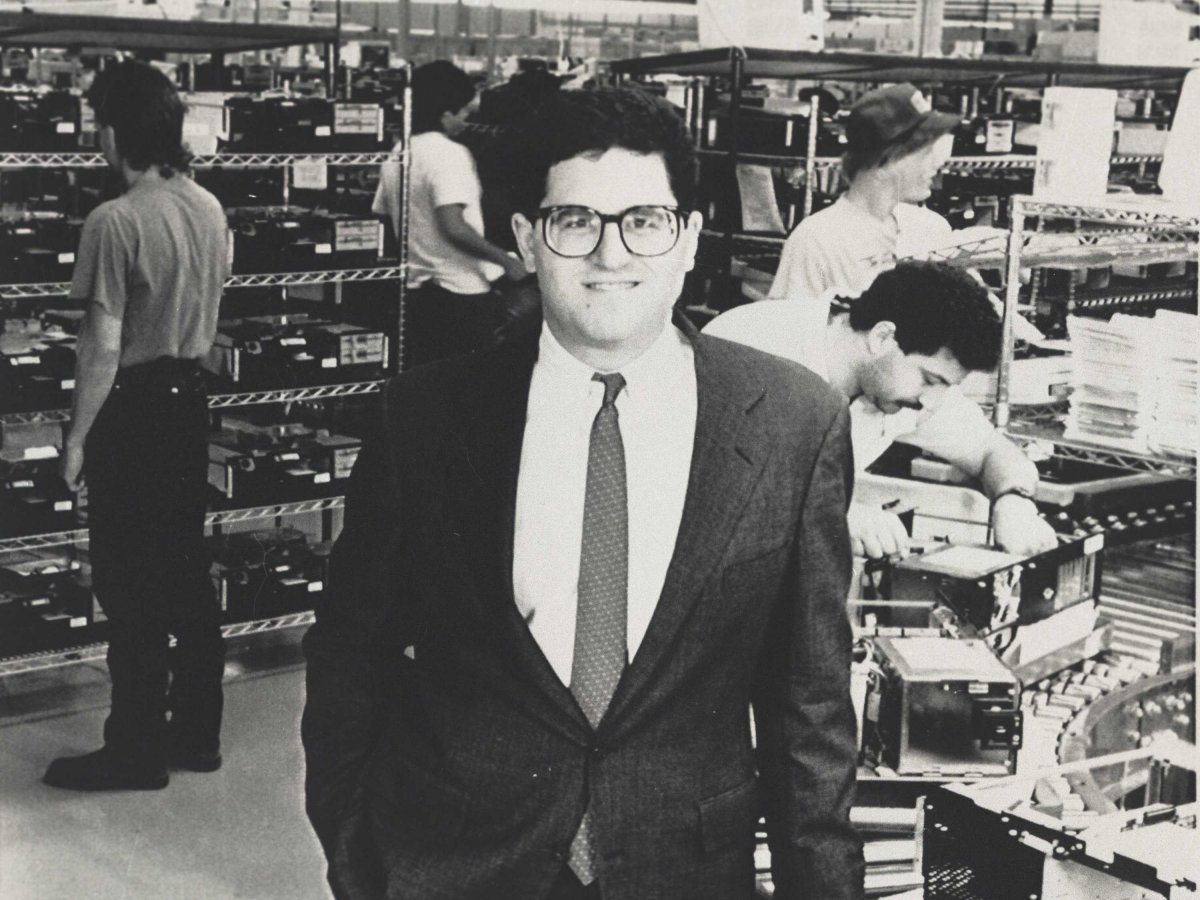
Rebecca McEntee / AP Images
Dell’s factories are a curious sight - they don’t have a warehouse. No On the one hand, trucks with components enter the plant and blank orders are entered, on the other hand trucks with ready-made tested computers, already equipped with software, drive off. They are immediately sent to the customer who ordered them.
Despite the numerous problems that plagued the company (including laptop fire hazards in 1993, a temporary concession to a significant market share of Gateway in the mid-90s, and so on), the company could not only survive, but also become the most profitable PC manufacturer in the world. In 2004, the company's sales amounted to more than $ 49 billion, and profits - about $ 3 billion.
March 4, 2004 Michael Dell resigned as CEO, but remained chairman of the board of directors, and Kevin Rollins took his place.
In 2005, the Forbes 400 list of the richest people Dell was in 4th place in the United States and 18th in the world. His fortune was estimated at about $ 18 billion. Today Michael Dell is ranked 10th on this list with a score of $ 20 billion.
In 2013, Dell fully redeemed his offspring and became almost the one-man master of it. This allowed Dell to get out of control of the public market, and although the company still publishes its financial indicators, it can carry out its activities without looking at anyone and invest any amount of funds in the long-term development.
Michael Dell lives in Malibu, California. His house is on the 15th place in the list of the largest houses in the world, its value is estimated at about $ 18.7 million.

Dell and EMC
When three people worked at Dell Computer and they all sat in one tiny room, Dell shared with his friends the dream of becoming the largest PC manufacturer in the world. And I heard in response that this is unreal. And angry: "Why should people want to be second, third or tenth?"
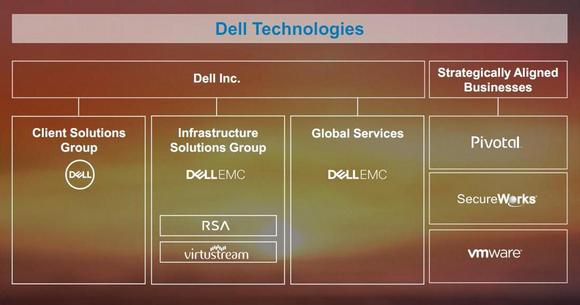
And now, thanks to a deal with EMC, the world's largest privately owned IT corporation, called Dell Technologies, has appeared on the market.
In an interview with CRN, Michael Dell talked about a competitor’s failed attempt to buy EMC, about Hewlett Packard Enterprise’s attempts to entice EMC channel partners, and about competitors ’reaction to a landmark Dell-EMC deal.
What is the background to this deal, and what led to the merger of Dell and EMC?
If you go back and look at all the documents that are in the public domain about this merger, you will find that discussions between Dell and EMC began in 2014, and even before these discussions there were negotiations with another company. You will have to try to guess who it was. Perhaps you will guess.
My view on this is that the formation of Dell Technologies has changed the landscape of the industry, and all the competitors you are asking about - they respond to it. Their strategies will have to respond to what we have created. And they have a rather limited response spectrum.
Hewlett Packard Enterprise states that it is successfully recruiting EMC partners who are concerned about integration. Did you notice any EMC partners leaving for HPE?
No, I did not notice anything significant. If you look at the strength of our portfolio, we are very well positioned for partners. We are No. 1 in storage, and we have incredibly strong positions in x86 servers, as well as in converged and hyper-convergent infrastructure with VxRail and VCE lines.
What steps are you going to take to get EMC partners to work faster?
I was with [commercial director of Dell and the president of Enterprise Solutions] Marius [Haas] and [vice president of global sales strategy and channel] John [Bern] at a meeting with a number of great EMC partners. Listen, if you look at the breadth of the portfolio, which we have, and the significant development of the Dell channel over the past eight years, EMC has a long history with many of these partners as well; To bring it all together is a great opportunity for partners and for us.
How are you going to reduce these two different corporate cultures, and how will your two organizations build their entry into the market?
We surveyed 75,000 people at Dell and EMC, where we asked them to rank and evaluate 22 different aspects of the culture, and we found something quite surprising, namely that the five most important attributes put in first place by the Dell team and the EMC team were Accuracies are the same. Even more remarkable, they were arranged exactly in the same order.
So although there is a widespread belief that cultures are different, in fact, when you ask 75,000 people at Dell and EMC: what matters, what you value, why you appreciate it, you end up with exactly the same answers.
But you, of course, will find differences in culture by occupation. For example, your sales staff are not friends with engineers, and your lawyers are not friends with marketers. This is not necessarily a bad thing. No one expects everyone to hold hands and sing songs, and they will be the same. You want to take the best of two cultures, and we do this, guided by a number of principles and making decisions based on facts.
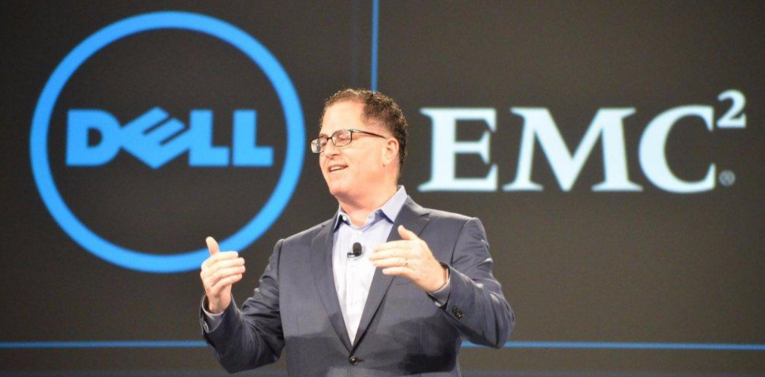
Source: https://habr.com/ru/post/310414/
All Articles